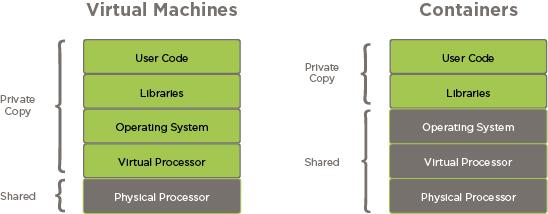The software development world offers its inhabitants a lot of methods for solving various tasks – dozens of technologies with different goals and essences; hundreds of ways to code a single application. And with the continuous improvement of technology, there is another innovation modern IT specialists are faced with. In this article, we will briefly discuss virtualization and containerization, discover their basics, and answer the question of which technology should be used in a particular situation.
Introduction to Virtual Machines
In some cases, you need to extend the capabilities of your host OS with some extra features. There may be projects that require testing and maintenance on some devices that you do not have at your disposal at the moment. This is where virtualization comes in. A virtual machine (VM) enables running a guest operating system on your computer’s hardware. With these technologies, a software developer can easily install iOS on a Windows laptop, combine Unix and Linux on one device, etc.
Virtual machines have their own set of software tools: the IT engineer gets access to specific binaries, libraries, and other extensions available on the virtual operating system. Besides that, the VM will use the exact number of gigabytes of memory that you assign to it.
Let us take a look at some of the best features virtualization offers:
- Hardware-level virtualization, which means that multiple guest operating systems can share the resources of the hardware;
- Limited performance: a software engineer is able to set up the VR and define how much space it can use, thus the performance depends completely on the space available on the server;
- Full isolation: the operating systems are separate from one another;
- Saving development costs via reducing footprints, rapid server provisioning, and disaster recovery improvement.
Unfortunately, there are some negative aspects to virtual machine usage. As was mentioned above, the virtual machine uses some of your computer’s resources; hence, you cannot use the full capabilities of your hardware to set up and support the virtual machine. Because of this, you lose performance on both your virtual machine and the host OS. It turns out this issue makes each stage of the development process more time-consuming and complicated. Additionally, this issue may lead to portability limitations between the software and clouds or data centers.
The Essence of Containerization
The popularity of containerization has risen recently. The market analysis says that the number of containers installed is growing by 40% per annum. The reason is simple: containers are perfect for the Agile methodology.
No matter what you work with, Linux or Windows, you can install containers to your OS directly. One of the key features and the main advantage of containers is their size. A container that is only a few megabytes in size is much easier and faster to install than a huge VM that requires gigabytes on the server. The convenient portability of containers is also important.
The fact that containers run on a host OS simplifies their management considerably. You only need to pay attention to a single OS with no necessity to keep an eye on both the native OS and the virtual machine. (Read more: Are docker containers suitable for your project?)
Here are some of the main containerization features you need to be aware of:
- Host OS virtualization: containers share the space on one single OS;
- Fast data provisioning, so the data center can answer a user’s query immediately;
- Native performance, as the container has full access to the hardware’s capabilities;
- Partial isolation: the containers share one OS – they are not fully separated and hence, not as secure as virtual machines.
One of the biggest disadvantages of containers in comparison to virtualization is reduced security. Containers share the kernel and the components of a single host operating system, which may negatively influence their security. They are less isolated and thus more sensitive to potential attacks than VMs.


